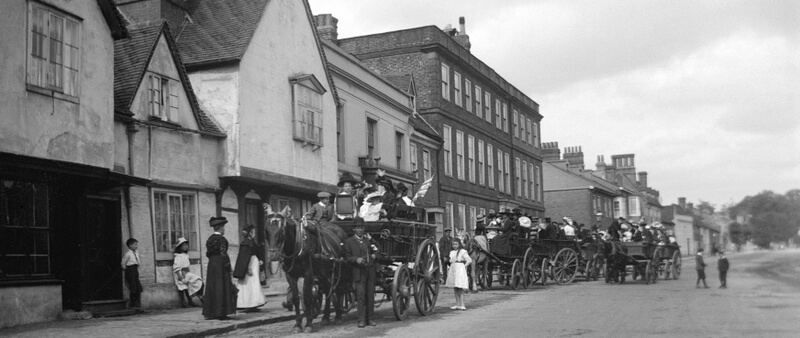In 1200, after the Earl of Essex had bought the right to a weekly market and an annual fair, the South side of the High Street was laid out as a planned town with burgage plots 20ft wide and 200 ft long extending to a back lane, the Common Plat – now The Platt and the footpath from the end of The Platt going west. These plots were offered to ‘burgesses’ – bakers, butchers, drapers, tailors and other useful tradesmen.
From around 1300, people on the South side could vote for the MPs that the borough began sending to Parliament, and therefore the Lord of the Manor took a great deal of interest in that side because he wanted a family member to be an MP and he wanted contacts with the court. So there were advantageous rents, which would attract well-to-do traders who would also boost the income from the market. But the borough did not extend to the North side, where the land belonged not to the Manor but to the Rectory. Here, the land and the plots backed higgledy-piggledy on to the River Misbourne. Thus it was that Amersham acquired its beautiful, wide High Street laid out by mediaeval planners.
See also Eustace Alliott’s notes about the High Street written in 1960
The sub-pages for this road are shown in the column to the left (or below on mobile devices)


